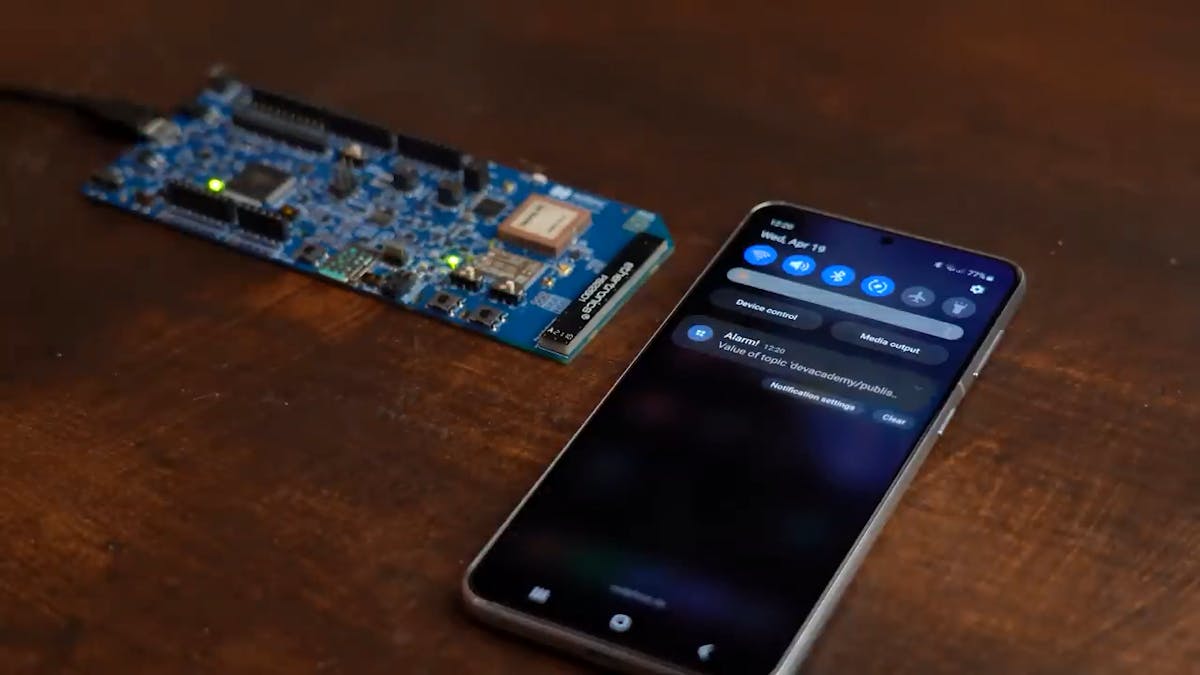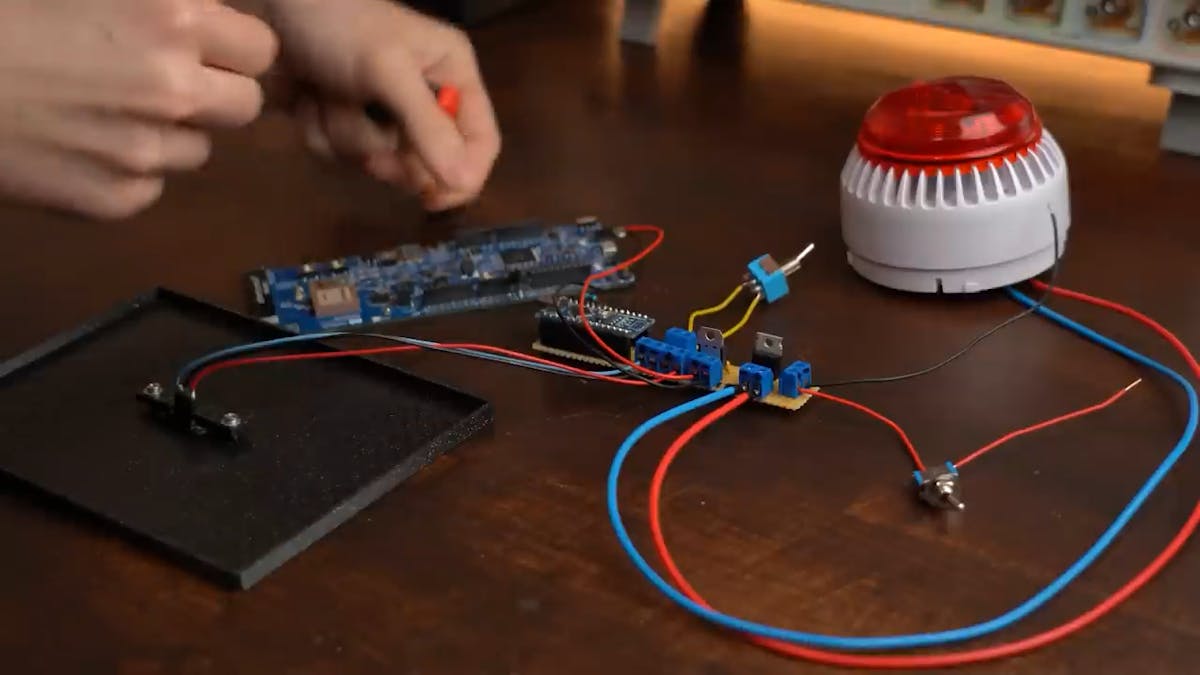4G Alarm System Scares Thieves and Notifies You When It Detects a Person
GreatScott! shows a build that protects treasures.

Keeping possessions safe can be as simple as scaring away potential thieves. While plenty of commercially available alarm systems exist, you can also make one! GreatScott! recently built a 4G-enabled alarm system with off-the-shelf parts, including a Nordic Semiconductor development board.
Instead of a pyroelectric infrared sensor (PIR) motion sensor, the 4G alarm uses a "Human Presence Detector." These sensors are a millimeter-wave (mmWave) radar technology that operates at 24 GHz. A key advantage of mmWave sensors over PIRs is that not only do they detect motion, but they can also measure distance and detect whether the object is a person! In other words, they are far more effective at detecting an unwanted intruder than simple PIRs.

Scott used a Nordic nRF9160-DK development board. It features an nRF9160 system-in-package (SiP) containing an Arm Cortex-M33 microcontroller, LTE modem, RF front-end, and a power management controller. The LTE modem supports LTE-M and NB-IoT, which gives the modem longevity in the ever-evolving cellular ecosystem.

Some might wonder why an Arduino is in the box when the nRF9160-DK is a competent board. The reason is related to software.
Out of the box, Scott demonstrated how to use the nRF9160-DK to connect to the cellular network and send messages via MQTT. MQTT is a lightweight protocol for sending simple messages from IoT devices. In this case, the dev board sends a message to a mobile phone via an MQTT broker in the cloud.
The trigger for the message is an onboard push button. So, Scott wired the I/O pin with a transistor to activate the message. For the sake of time, an Arduino handles activating the siren and monitoring the "Arm" switch. Moving those functions to the nRF9160 is just a matter of embedded firmware programming.
Overall, this 4G alarm is a clever use of off-the-shelf parts. The project is a great starting point if you wish to build one. You can see the extended explanation in the video above. The project files are available via this GreatScott! Patreon post.
Electronics enthusiast, Bald Engineer, AddOhms on YouTube and KN6FGY.


